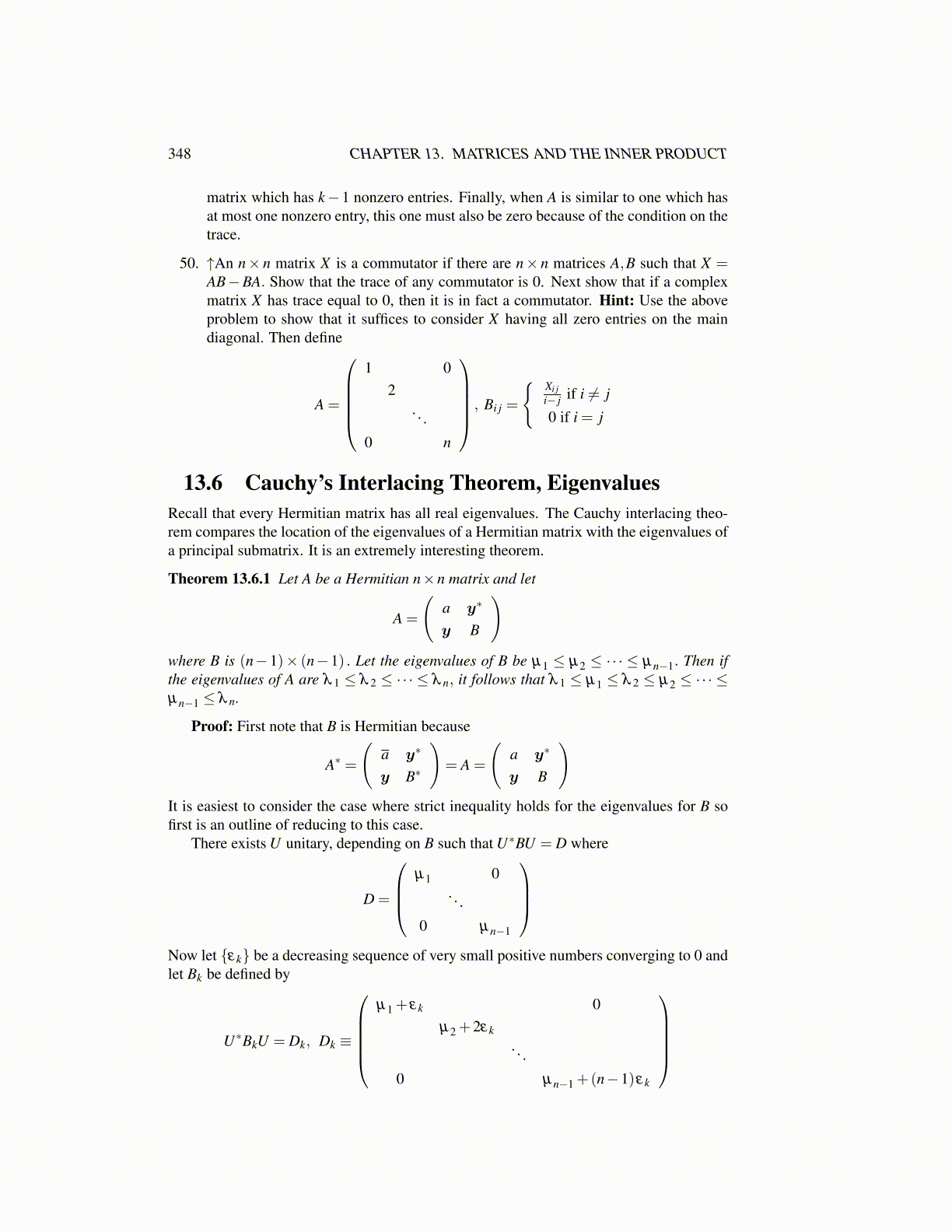
348 CHAPTER 13. MATRICES AND THE INNER PRODUCT
matrix which has k−1 nonzero entries. Finally, when A is similar to one which hasat most one nonzero entry, this one must also be zero because of the condition on thetrace.
50. ↑An n× n matrix X is a commutator if there are n× n matrices A,B such that X =AB−BA. Show that the trace of any commutator is 0. Next show that if a complexmatrix X has trace equal to 0, then it is in fact a commutator. Hint: Use the aboveproblem to show that it suffices to consider X having all zero entries on the maindiagonal. Then define
A =
1 0
2. . .
0 n
, Bi j =
{Xi ji− j if i ̸= j
0 if i = j
13.6 Cauchy’s Interlacing Theorem, EigenvaluesRecall that every Hermitian matrix has all real eigenvalues. The Cauchy interlacing theo-rem compares the location of the eigenvalues of a Hermitian matrix with the eigenvalues ofa principal submatrix. It is an extremely interesting theorem.
Theorem 13.6.1 Let A be a Hermitian n×n matrix and let
A =
(a y∗
y B
)where B is (n−1)× (n−1) . Let the eigenvalues of B be µ1 ≤ µ2 ≤ ·· · ≤ µn−1. Then ifthe eigenvalues of A are λ 1 ≤ λ 2 ≤ ·· · ≤ λ n, it follows that λ 1 ≤ µ1 ≤ λ 2 ≤ µ2 ≤ ·· · ≤µn−1 ≤ λ n.
Proof: First note that B is Hermitian because
A∗ =
(a y∗
y B∗
)= A =
(a y∗
y B
)It is easiest to consider the case where strict inequality holds for the eigenvalues for B sofirst is an outline of reducing to this case.
There exists U unitary, depending on B such that U∗BU = D where
D =
µ1 0
. . .
0 µn−1
Now let {εk} be a decreasing sequence of very small positive numbers converging to 0 andlet Bk be defined by
U∗BkU = Dk, Dk ≡
µ1 + εk 0
µ2 +2εk. . .
0 µn−1 +(n−1)εk